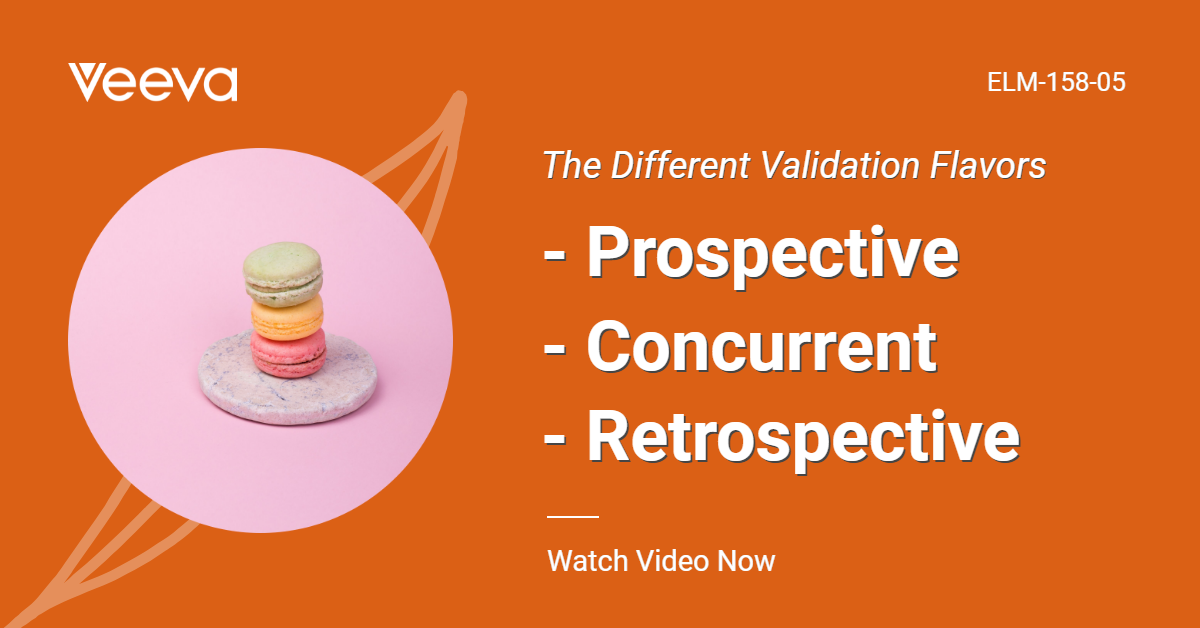Validation is a concept that has been evolving continuously since its first formal appearance in United States in 1978. The concept of validation has expanded through the years to encompass a wide range of activities which should take place at the conclusion of product development and at the beginning of commercial production. Validation is confirmation by examination and provision of objective evidence that the particular requirements for a specified intended use are fulfilled.
What are the Four Main Types of Validation?
There are 4 main types of validation:
- Prospective Validation
- Concurrent Validation
- Retrospective Validation
- Revalidation (Periodic and After Change)
What is Prospective Validation?
Prospective validation is carried out during the development stage.
It includes the division of the production process into separate steps, and the analysis of potentially critical points in the manufacturing process e.g. mixing times, or temperature.
This particular type of process validation is normally carried out with the introduction of new products and manufacturing processes.
Before this validation can take place, the following requirements need to be satisfied:
- The facilities & equipment must be qualified
- The operators running the validation batches must have an understanding of the process
- The design and optimization must be completed
- The pilot laboratory batches must be completed
- Product stability information is available
- At least one pilot batch has been completed which shows no significant deviations from the expected performance of the process.
What is Concurrent Validation?
Concurrent validation is carried out during normal production. It requires a full understanding of the process based on prospective work.
It involves very close and intensified monitoring of all the manufacturing steps and critical points in at least the first three production-scale batches
Examples of in-process testing include:
- pH Value
- Tablet Hardness
- Weight Variation
- Dissolution Time
- Content Uniformity
- Viscosity or Density
- Colour or Clarity
- Particle Size Distribution
- Average Unit Potency
What is Retrospective Validation?
Retrospective validation is the analysis of accumulated results from past production batches manufactured under identical conditions to assess the consistency of a process.
It includes trend analysis on test results and a close examination of all recorded process deviations and their relevant investigation reports.
This type of validation is applied to established products who are considered stable where prospective validation programs cannot be justified.
Using either data-based computer systems or manual methods the following method can be used to perform
retrospective validation:
- Gather the numerical data from completed batch records
- Organise this data in sequence i.e. Batch Manufacturing Date
- Include the data for at least 20-40 batches, if the number is less than 20 include all of the data available
- Lean the data by eliminating all of the non-critical numerical information
- Subject this data to statistical evaluation
- Analyse the state of control of the manufacturing process
- Generate a report of all findings
What is Revalidation?
Periodic revalidation offers the opportunity to check that the systems are still operating as originally validated and that no unintended changes have affected the process, system or piece of equipment and the end result.
Conditions requiring revalidation can be summarised into 5 main categories:
- A change to a critical raw material involved with the drug make-up
- A change or replacement of a critical piece of equipment
- A change to the facility
- A significant increase or decrease in batch size
- Sequential products that that fail to meet product and process specifications





